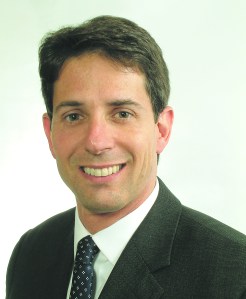May the (Work)Force Be With You: Phoenix Realty Group’s Keith Rosenthal
By Billy Gray December 3, 2013 10:00 am
reprintsJaws continue to drop around the city with what seem to be weekly announcements of new skyscraping luxury apartment developments from 57th Street to the Financial District. And the drumbeat of stories about the low-income housing crisis should only build with the incoming mayor’s arrival at City Hall.
But a third sector of the residential market—working-class housing—hasn’t received as much attention at this pivotal juncture in the city’s recent history. Phoenix Realty Group, an owner and fund manager of multifamily properties across the city and country, has made Class B and C residential buildings its bread and butter over the past 15 years. And its New York-based management is eager to see how Mayor-elect Bill de Blasio approaches the housing of New Yorkers who are neither oligarchs nor impoverished.

“Work force housing sounds like a unique name,” said Keith Rosenthal, the co-founder (with J. Michael Fried) and president of PRG. “We’re even hesitant to use it. People hear it and think it’s a housing program. But most of the apartments in this country are geared toward middle-income renters.”
Mr. Rosenthal came to PRG from Lehman Brothers, where he founded and was president of Lehman Housing Capital, a housing tax credit syndication firm. Mr. Fried worked at The Related Companies, where he formed the firm’s real estate financial services arm, Related Capital Company. The pair partnered 25 years ago on “a couple billion dollars” worth of multifamily deals. In 1999, they joined forces to create PRG.
“Within multifamily, we did everything ranging from market-rate to low-income housing with tax credits,” Mr. Rosenthal said. “We worked with high rises in the city and garden apartments in suburbia. But we didn’t know what to do with all this knowledge.” Early into the company’s run, a not-for-profit approached Messrs. Rosenthal and Fried and spoke of the “forgotten middle” of work force housing. “They knew that the lower end was getting subsidies and people knew how to provide it and that luxury had no problem.”
Currently, PRG’s roughly 3,000 New York City units are clustered around Bedford-Stuyvesant and Bushwick in Brooklyn and upper Manhattan. “We can consider northern Manhattan part of the outer boroughs,” Mr. Rosenthal said. “It’s also coming of age.” Elsewhere, they’ve built a portfolio of walk-up buildings on West 49th Street between Eighth and Ninth Avenues and the David Arms at 340 East 90th Street. PRG has grown in Westchester, New Jersey and Connecticut. Nationally, the firm has a major presence in Southern California and Florida. Over the next three years, Mr. Rosenthal said PRG hopes to double the size of its portfolio which now has over $1.35 billion in assets.
PRG’s main objective is to acquire Class B and C buildings and renovate them to contemporary standards. “Yes, we get more rent,” Mr. Rosenthal said. “We make money. Otherwise, we won’t attract capital. At the same time, tenants get a nicer place to live, a place that they’re proud of. These are not lipstick rehabs. And we make a difference in the neighborhood. We clean up the facades, add retail and contribute to making nice neighborhoods with continuity.” At the end of the day, the rents in PRG’s buildings are still cheaper than new construction.
“That’s our shtick, if you will,” Mr. Rosenthal said. “The rents will still be a value for a given neighborhood.” As for retail rehab, he mentioned everything from national chains like 7-Eleven to neighborhood grocers to child care facilities as attractive prospects. “They’re not destination tenants,” he said, although local restaurants can greatly benefit a neighborhood.
PRG began toward the end of Rudy Giuliani’s transformative tenure as mayor when the city—or at least Manhattan below 96th Street—was acquiring its contemporary glossy sheen. Work force housing was a shrinking commodity then and is even scarcer following 12 years of Mayor Michael Bloomberg’s business-friendly reign.
“It’s tighter now,” Mr. Rosenthal said. “On the other hand, that barrier between Manhattan and the outer boroughs is starting to fall.” Speaking as much from an investor’s perspective as a middle-class renter’s, he added, “It became O.K. to live right across the river. Now it’s O.K. to live a little farther across the river.”
“On some level, that speaks to the city’s health,” he said of the expansion east and north of neighborhood desirability. “It attracts young workers” in technology and other fields. But it has also led to fears of an affordability squeeze that the Mayor-elect capitalized on during his unexpected march to victory.


